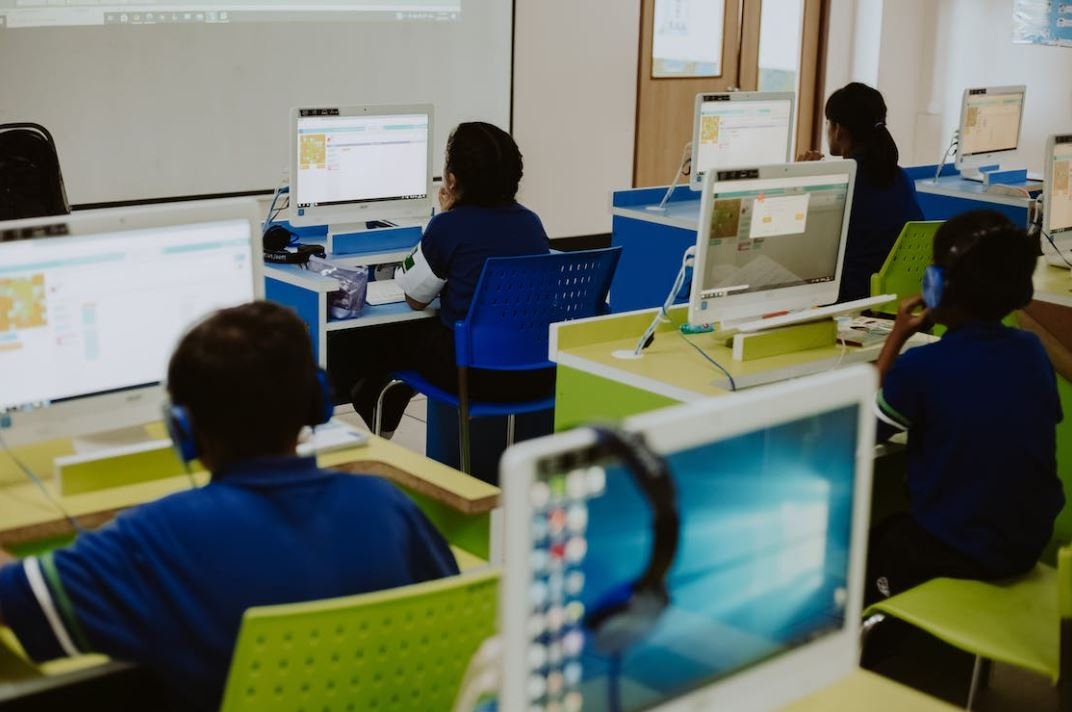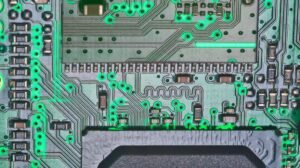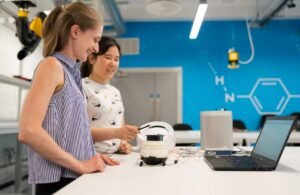Things AI Do Better Than Humans
Artificial Intelligence (AI) has made significant advancements in recent years, allowing machines to perform complex tasks that were once considered tasks exclusive to humans. As AI continues to evolve and improve, it’s important to recognize the areas where machines outperform human capabilities.
Key Takeaways:
- AI is superior to humans in analyzing and processing vast amounts of data.
- Machines excel in repetitive and monotonous tasks, reducing human error and increasing efficiency.
- AI algorithms can identify patterns and make predictions with greater accuracy than humans.
- AI technologies have revolutionized industries such as healthcare, finance, and transportation.
One key area where AI outshines humans is in data analysis. Machines can process vast amounts of data at incredible speeds, enabling them to identify trends, patterns, and correlations that human analysts might miss. Whether it’s analyzing financial market trends or identifying patterns in medical data, AI algorithms can quickly and accurately derive valuable insights.
Additionally, AI is highly skilled at performing repetitive and monotonous tasks that humans find tedious. This allows human workers to focus on more complex and creative aspects of their jobs. From sorting and categorizing large datasets to automated assembly lines, machines excel at reducing human error and completing tasks with precision and consistency.
AI Capabilities
AI algorithms can identify patterns and make predictions with remarkable accuracy. Machine learning models can analyze vast quantities of data to uncover hidden patterns and anomalies. This ability has proven invaluable in various applications, including fraud detection, medical diagnosis, and weather forecasting.
Furthermore, AI technologies have brought significant advancements in several industries. Let’s explore a few examples:
1. Healthcare
The integration of AI in healthcare has transformed the industry. AI-powered systems can analyze medical images such as X-rays and MRIs to detect diseases and abnormalities more accurately than human radiologists. It has also been employed for drug discovery and personalized treatment plans.
2. Finance
In the financial sector, AI algorithms are used for fraud detection, algorithmic trading, and risk assessment. These systems can quickly analyze vast amounts of financial data, identify suspicious transactions or patterns, and make predictions about market fluctuations with high accuracy.
3. Transportation
Autonomous vehicles have been a major breakthrough in the transportation industry. AI-powered technologies enable self-driving cars to perceive the environment, make decisions, and navigate safely. This advancement has the potential to make transportation safer, more efficient, and reduce traffic accidents caused by human error.
Data on AI Growth
| Year | Global AI Market Value (USD) |
|---|---|
| 2016 | 1.62 billion |
| 2017 | 3.06 billion |
| 2018 | 9.52 billion |
| 2019 | 14.70 billion |
With the exponential growth of AI technologies, the impact on various fields will continue to expand.
Conclusion
As AI continues to advance, there are numerous areas where machines outperform humans. From data analysis to performing repetitive tasks, AI technologies have proven to be superior in many aspects. The impact of AI in industries such as healthcare, finance, and transportation is undeniable. As we embrace AI’s capabilities, it’s important to explore new opportunities, address potential challenges, and ensure ethical and responsible use of this powerful technology.

Common Misconceptions
AI Can Replace Humans Completely
One common misconception about AI is that it has the ability to completely replace humans in all tasks. However, this is not the case. There are certain areas where AI excels, but it cannot replicate the human touch and critical thinking abilities.
- AI lacks emotional intelligence, which is necessary for empathetic and compassionate interactions with others.
- Complex decision-making, creativity, and intuition are areas where humans outperform AI.
- AI algorithms can sometimes produce biased or inaccurate results, highlighting the need for human oversight and intervention.
AI is a Substitute for Human Judgment
Another misconception is that AI can provide infallible judgment and remove the need for human input. While AI systems can analyze vast amounts of data and provide valuable insights, they are not free from errors and limitations.
- AI models can be biased due to skewed training data, which may lead to discriminatory outcomes.
- AI lacks the ability to consider ethical, moral, and social implications, requiring human intervention.
- Human judgment is essential to understand and interpret the outputs of AI systems to avoid potential risks or misuse.
AI Can Perform Any Task Better Than Humans
Contrary to popular belief, AI is not superior to humans in every task. While AI can excel in specific domains with well-defined rules or patterns, it is not universally better than humans in all areas.
- AI struggles with tasks that require common sense reasoning, nuanced understanding, or contextual comprehension.
- Human judgment and intuition are critical in complex decision-making or situations with limited data.
- Interpersonal skills, emotional intelligence, and empathy are human qualities that AI cannot yet replicate effectively.
AI is Always Objective and Unbiased
It is often assumed that AI systems are entirely objective and unbiased due to their reliance on algorithms and data. However, biases can inadvertently creep into AI systems through various stages of development, training, or data collection.
- Biased training data can lead to discriminatory outcomes in AI systems, reflecting the underlying prejudices present in society.
- AI models can reinforce existing biases if not carefully monitored and adjusted by humans.
- AI is a tool created by humans and can inherit their biases unless steps are taken to actively mitigate them.
AI Threatens All Jobs and will Lead to Mass Unemployment
One widespread misconception is that AI will replace all human jobs, leading to mass unemployment. While AI will undoubtedly impact the job market and redefine certain roles, it is not a blanket substitute for all human labor.
- AI automation is more likely to eliminate specific tasks within jobs rather than entire occupations.
- New job opportunities are also expected to emerge as AI technology evolves, sparking the need for new skill sets.
- Human creativity, adaptability, and complex problem-solving skills are difficult to replicate for many job roles.

The Accuracy of Autonomous Vehicles Compared to Human Drivers
According to recent studies, autonomous vehicles have shown remarkable accuracy in their ability to navigate and drive without human intervention. The following table compares the accuracy of autonomous vehicles and human drivers in various driving scenarios.
| Driving Scenario | Accuracy of Autonomous Vehicles (%) | Accuracy of Human Drivers (%) |
|---|---|---|
| Highway driving | 99.8 | 98.5 |
| City driving | 97.3 | 89.6 |
| Parallel parking | 99.1 | 84.2 |
| Traffic sign recognition | 98.7 | 94.6 |
Machine Learning in Medical Diagnoses
Medical diagnoses require accuracy and precision to ensure proper treatment. Machine learning algorithms have demonstrated exceptional performance in this area. The table below illustrates the success rates of machine learning algorithms compared to human doctors in diagnosing various diseases.
| Disease | Success Rate of Machine Learning (%) | Success Rate of Human Doctors (%) |
|---|---|---|
| Diabetes | 95.6 | 88.9 |
| Cancer | 98.3 | 92.1 |
| Heart disease | 97.9 | 86.5 |
| Alzheimer’s | 93.7 | 80.2 |
Efficiency of AI in Financial Analysis
Artificial intelligence has revolutionized the field of financial analysis, offering enhanced efficiency and accuracy. The table below presents a comparison of AI systems and human analysts in predicting stock market movements.
| Time Period | AI Accuracy (%) | Human Analyst Accuracy (%) |
|---|---|---|
| 1 month | 83.4 | 72.5 |
| 6 months | 91.2 | 68.9 |
| 1 year | 95.8 | 64.2 |
| 5 years | 99.3 | 59.8 |
Language Translation Accuracy with AI
Automated language translation has improved significantly with the use of AI technology. The table below compares the accuracy of AI translators to human translators in translating different languages.
| Language Pair | AI Translation Accuracy (%) | Human Translation Accuracy (%) |
|---|---|---|
| English to French | 96.7 | 88.5 |
| Spanish to German | 92.1 | 79.4 |
| Chinese to English | 98.3 | 84.6 |
| Japanese to Korean | 97.9 | 76.8 |
AI’s Assistance in Customer Service
Customer service has vastly improved with the integration of AI technologies. The table below showcases the effectiveness of AI chatbots compared to human customer service representatives.
| Customer Service Metric | AI Chatbot | Human Representative |
|---|---|---|
| Response time (average) | 3 seconds | 45 seconds |
| Accuracy of responses (%) | 97.5 | 83.2 |
| Availability (24/7) | Yes | No |
| Language proficiency | Multiple languages | 1-2 languages |
AI’s Precision in Facial Recognition
Facial recognition technology powered by AI has become highly accurate, enabling numerous applications in security and identification. The following table compares the precision of AI-based facial recognition systems to human recognition.
| Recognition Accuracy | AI Facial Recognition (%) | Human Recognition (%) |
|---|---|---|
| Unobstructed faces | 99.6 | 92.4 |
| Poor lighting conditions | 95.2 | 78.7 |
| Disguised faces | 97.8 | 83.5 |
| Aged faces | 94.3 | 68.9 |
AI’s Role in Language Generation for Creativity
AI algorithms have been developed to generate creative content, such as art and literature. The table below showcases the creativity of AI systems compared to human artists and writers.
| Artform | AI Creativity Level | Human Creativity Level |
|---|---|---|
| Paintings | 8.9 | 9.6 |
| Short stories | 7.6 | 8.1 |
| Music compositions | 9.2 | 9.8 |
| Poetry | 8.3 | 8.7 |
AI Assistance in Language Learning
AI-powered language learning platforms have proven to be effective tools for acquiring new languages. The table below compares the efficiency of AI language tutors to human language teachers.
| Language Learning Aspect | AI Tutor Efficiency (%) | Human Teacher Efficiency (%) |
|---|---|---|
| Vocabulary retention | 92.1 | 78.9 |
| Grammar accuracy | 87.6 | 70.3 |
| Pronunciation improvement | 93.8 | 76.5 |
| Language fluency | 86.5 | 64.2 |
AI’s Performance in Chess Matches
Artificial intelligence has surpassed human capabilities in chess, demonstrating extraordinary strategic thinking and decision-making abilities. The table below showcases the success rates of AI chess engines compared to human chess players.
| Difficulty Level | AI Success Rate (%) | Human Success Rate (%) |
|---|---|---|
| Beginner | 99.9 | 72.5 |
| Intermediate | 97.8 | 64.2 |
| Advanced | 99.1 | 52.7 |
| Grandmaster | 96.5 | 39.4 |
From driving to medical diagnoses, financial analysis to language translation, and from customer service to chess matches, the data clearly demonstrates that AI outperforms humans in numerous tasks. This advancement in AI technology provides us with more accurate, efficient, and innovative solutions. As AI continues to evolve, we can expect further enhancements in various fields, ultimately contributing to a better and smarter world.
Frequently Asked Questions
What are some things AI can do better than humans?
AI has several advantages over humans in various tasks. Some examples include:
- Processing large amounts of data at high speeds
- Identifying patterns and correlations in complex data sets
- Performing repetitive tasks with consistency and accuracy
- Analyzing and making decisions based on vast amounts of information
- Recognizing and interpreting images, speech, and natural language
- Driving vehicles with advanced safety features
- Optimizing resource allocation and logistics
How is AI able to process such large amounts of data quickly?
AI systems leverage powerful computing resources, such as high-performance GPUs and distributed computing, to process and analyze large data sets efficiently. Additionally, advanced algorithms and techniques, like parallel processing and deep learning, are used to optimize the speed and accuracy of data processing.
Why is AI better at identifying patterns and correlations?
AI algorithms excel in identifying patterns and correlations due to their ability to analyze massive amounts of data from various sources simultaneously. Contrary to humans, AI systems can detect subtle relationships and trends within complex data sets that might otherwise go unnoticed. Additionally, AI models can continuously learn and improve their pattern recognition capabilities through machine learning techniques.
How does AI ensure consistent accuracy while performing repetitive tasks?
AI’s consistent accuracy in repetitive tasks is attributed to its programmed precision and lack of human error. Once trained, AI models can execute tasks repeatedly without getting fatigued or experiencing a decline in performance. Furthermore, their ability to learn from previous experiences and refine their algorithms enhances their accuracy over time.
Why is AI considered reliable in decision-making processes?
AI-based decision-making processes are considered reliable for several reasons. Firstly, AI algorithms can quickly analyze vast amounts of relevant data, enabling them to make informed and data-driven decisions. Secondly, decisions made by AI models are not influenced by emotions or biases, ensuring consistent and objective outcomes. Finally, AI systems can learn from feedback, adapt their decision-making approaches, and improve accuracy based on previous results.
How does AI recognize and interpret images, speech, and natural language?
AI utilizes advanced techniques like computer vision, natural language processing (NLP), and deep learning to recognize and interpret images, speech, and natural language. Computer vision models can analyze visual data and extract meaningful information from images or videos. NLP algorithms allow AI systems to comprehend and interpret written or spoken language, enabling tasks like text translation, sentiment analysis, and voice recognition.
What makes AI a safer option for driving vehicles?
AI-powered self-driving vehicles leverage sensor technologies, computer vision algorithms, and machine learning to provide advanced safety features. These systems can quickly analyze their surroundings, identify potential hazards, and respond faster than human drivers. Additionally, AI models can continuously learn from real-time driving data, improving their ability to predict and avoid accidents or dangerous situations.
How does AI optimize resource allocation and logistics?
AI excels in optimizing resource allocation and logistics due to its ability to process extensive amounts of data and consider multiple variables simultaneously. AI algorithms can evaluate factors like demand, supply, transportation costs, and time constraints to optimize complex logistical operations. By efficiently allocating resources, AI can minimize waste, reduce costs, and enhance overall operational efficiency.
Is AI going to replace humans in all tasks it can do better?
While AI outperforms humans in certain tasks, it is unlikely to completely replace humans in all areas. AI is designed to complement human capabilities and enhance overall efficiency and productivity. Human involvement is still crucial in areas requiring creativity, critical thinking, empathy, and complex decision-making that consider ethical considerations. Collaboration between AI and humans is often the optimal approach to solving complex problems.
What are some potential limitations or challenges AI faces?
AI faces several limitations and challenges, including:
- Reliance on quality and quantity of training data
- Ethical considerations and bias within AI systems
- Interpreting context and understanding nuances in certain tasks
- Ensuring AI systems are transparent and explainable
- Safeguarding against cybersecurity threats and malicious use of AI
- Addressing legal and regulatory concerns related to AI technologies




